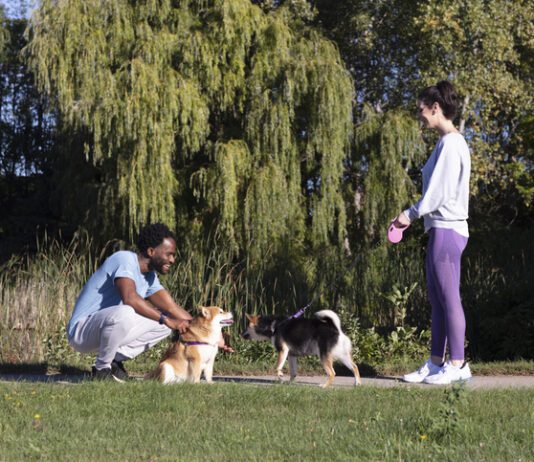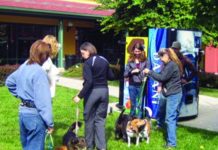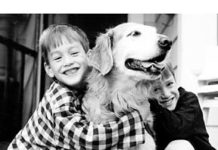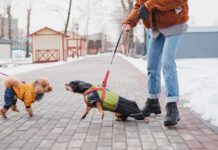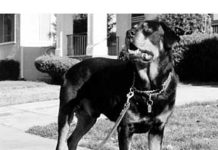How to React to a Dog’s Bully Behavior
There’s nothing like a good dog-pack hike to give our canine companions an opportunity to have fun with their peers and run themselves into a happy state of exhaustion – provided there are no canine bullies in the group. Just like human bullies on a school playground, canine bullies take the fun out of the game, put everyone on edge, and bring to the party a real risk of physical as well as psychological damage. A dog who is bullied, especially at a young age, can quickly develop a negative association with other dogs and become defensively aggressive as a result.
Rage Syndrome in Dogs
The term rage syndrome" conjures up mental images of Cujo
Letters: 08/04
Your vet should be a important member of your problem-solving team if your dog displays idiopathic aggression.
Constructional Aggression Treatment (CAT) Can Improve Behavior
Aggressive behavior in their beloved companions is an incredibly challenging and upsetting problem for most dog owners to deal with. The problem is painfully public -and the public is equally free with accusations and advice for the hapless owner of a reactive dog. Many training solutions" that people try are inhumane
A Holistic Dog Behavior Consultant’s Opinion on Dog Door Aggression
As a holistic behavior consultant, I believe that most problems people experience with their dogs are not really dog problems but rather communication problems. Dogs don't have problems being dogs; they have problems being dogs who live with humans. Most humans don't even know how to communicate with each other! Every interaction you have with a dog teaches the dog something about living with a human.
Understanding Aggression in Dogs
Aggression. It's a natural, normal dog behavior, but it's also a scary word that evokes images of maulings and dog-related fatalities. The term aggression" actually encompasses a long continuum of behaviors
On-Leash Aggression
It’s not uncommon for dogs to behave badly when they are leashed and see other dogs – and it doesn’t mean they are truly aggressive. Here’s what to do to achieve peace on leash.
Dog Breed Stereotypes: Inaccurate and Damaging
Poor agreement was found between visual breed assignments and DNA results in 14 of the 20 dogs (70 percent). Moreover, there was low inter-rater reliability, meaning that the dog experts did not show a high level of agreement regarding breed assignments to the 20 dogs. More than half of the evaluators agreed on the predominant breed in only seven of the 20 dogs (35 percent). These results provide evidence that physical appearance is not a reliable method for breed identification.
Too Mean To Keep?
I have a serious problem with my six-year-old neutered male Vizsla. He was a high strung, but good tempered dog for the first three years of his life. Something seemed to snap after that. He is loving and affectionate most of the time, but he gets aggressive when family members leave the kitchen (he and our other dog are limited to the kitchen and family room). He barks, snaps at them, and snags clothes with his teeth. He has never chomped down and bitten anyone, but he has scratched people with a tooth.
Managing Dog-Aggressive Dogs in the Family
If you do nothing else about the aggression between your dogs, you must scrupulously manage their movements and activities. Every time your dog successfully engages in a behavior that you don't want her to exhibit, it makes it that much harder to convince her that it's not a useful behavior strategy. Every time your dog aggressively communicates to another canine family member, it increases the potential for unresolvable aggression between the two and serious injury to one or both.
Fear Aggression in Dogs
Fear-related aggression most frequently appears between the ages of eight to 18 months, as a young dog reaches maturity. This may be because increased boldness tends to come with maturity. But it's also likely because, over time, aggressive responses are reinforced; the scary stimulus (most often a human, when we're talking about aggression issues) backs off. Initially, a fearful pup generally tries to hide from scary humans by moving away, perhaps crawling under a chair.
A Salute to Sergeant
Not all dogs have the benefit of a nice start in life. Sergeant had about the worst start possible. His first owners left Sergeant locked in their apartment when they abandoned it in October 1997. By the time the landlord found him, the three-year-old male Rottweiler-mix was emaciated. The landlord brought him to the Society for the Prevention of Cruelty (SPCA) of Upstate NY, a no-kill shelter. It was several days before Sergeant could eat solid food without vomiting.


